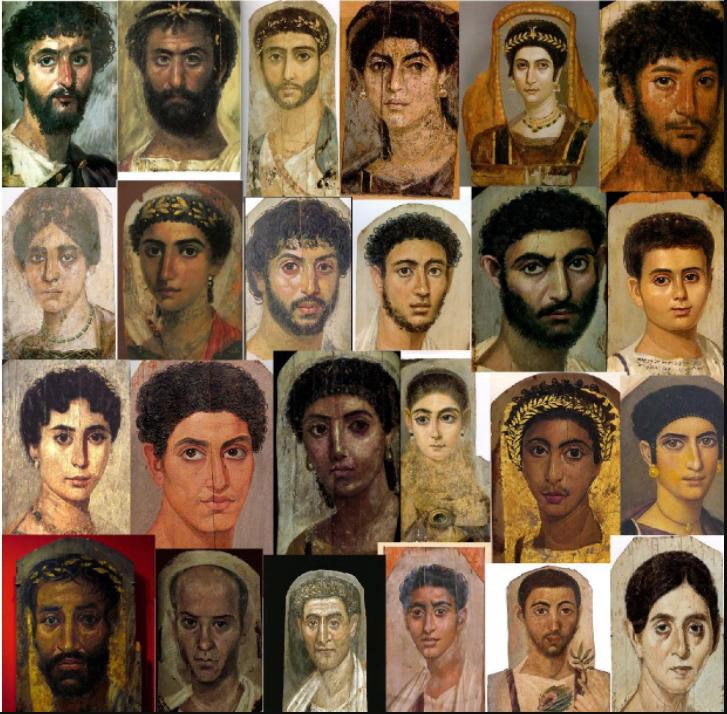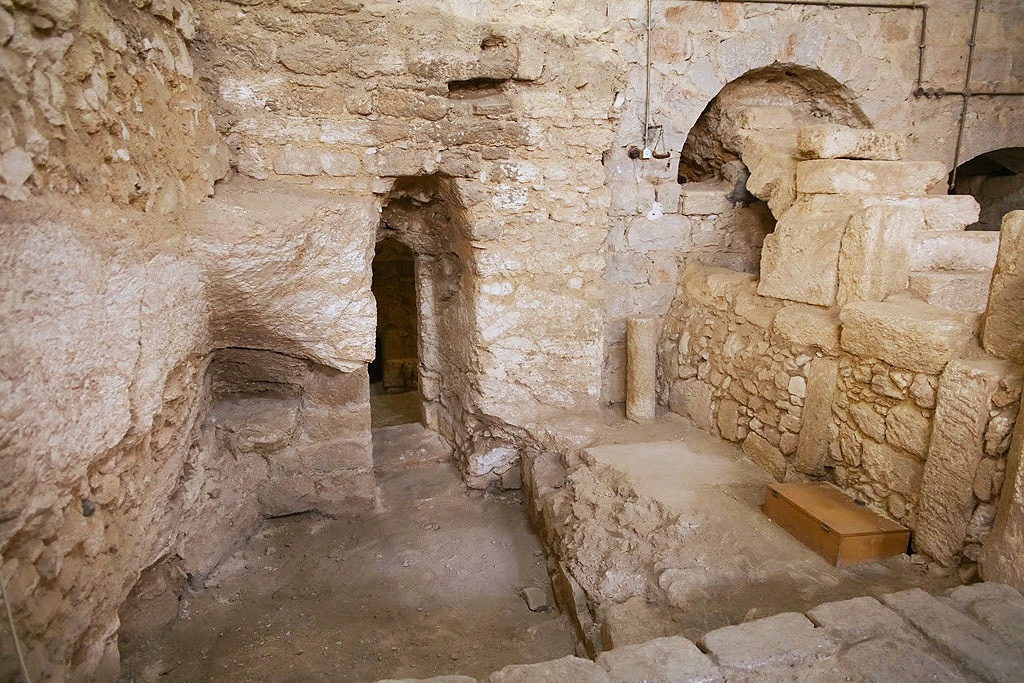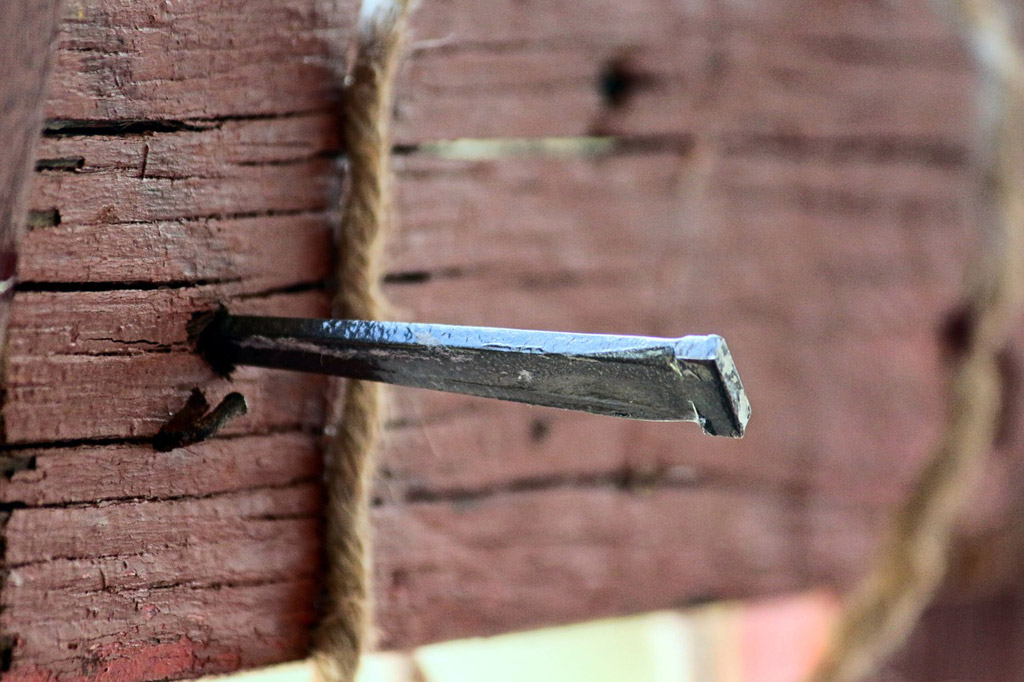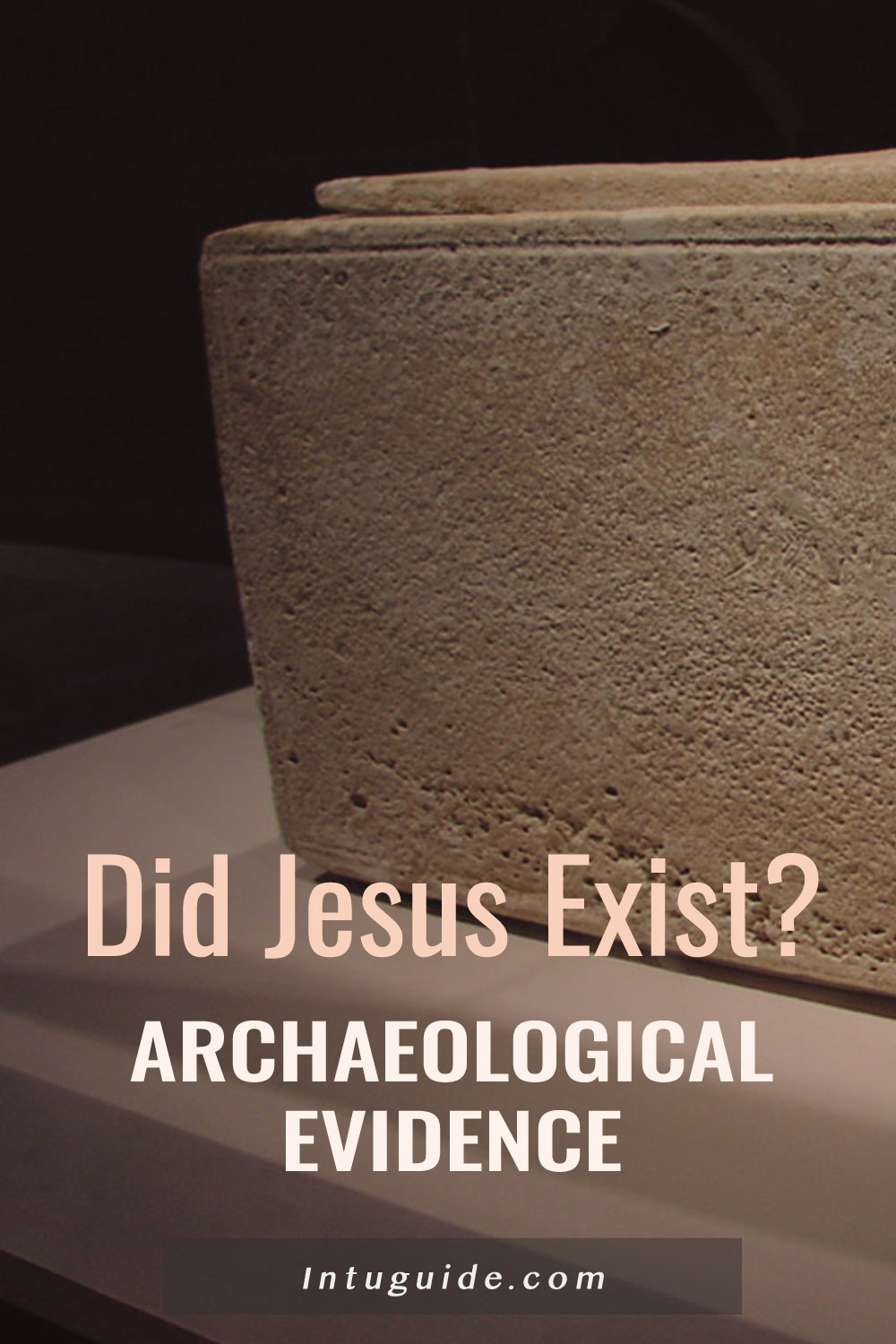Skeptics of all sorts believed that the New Testament writings, biblical names, places, and events were phony and invented by the apostles themselves.
Some skeptical scholars argued that certain gospels were written after the second century by an unknown author.
As time went by, more and more archaeological discoveries confirmed the Gospel accounts of people and places such as Caiaphas, Pilate, and first-century Nazareth.
Did Jesus exist? Here you will find some of the archeological evidence discovered in ancient towns and other places proving that Jesus did exist.
The life of Jesus is described mainly in the four canonical Gospels of the New Testament Bible written by Matthew, Mark, Luke, and John. The gospels described Jesus as a teacher, healer, and then as a perfect sacrifice for the redemption of the souls.
During the first centuries, nearly 42 authors have mentioned him in their writings, including nine non-Christian sources. Jesus’ name was mentioned not only in some of the historical writings but also in a few important archaeological findings that confirm 50 real people in the Bible. Both secular and religious historians acknowledge that Jesus Christ has influenced the first-century and modern world more than any other person.
The First-Century Hebrews
Few New Testament scholars believe that the first generation of Jesus’ followers certainly knew what Jesus looked like and his other personal information, but did not record it. The second of the Ten Commandments prohibited creating artwork, idols, or icons that represent living beings or celestial objects. The Talmud prohibited the production of images of faces and considered it forbidden. Only non-Jews had permission to create images of faces (source: Avodah Zara 43a).

The First-Century Hebrews Ancient Egypt Early Roman Period
via Wikimedia Commons
Many Hebrews such as the apostle Paul were mistaken to be Egyptians (Acts 21:38). Since it was not restricted for Egyptians to create artwork of faces, they created plenty of valuable historical records of their looks.
Nazareth

Excavation of Nazareth Ancient Town House Of Nutrition.
by madainproject
Jesus was born in Bethlehem, during the reign of Herod the Great (Matthew (2:1)). According to the gospels, his mother Mary had a virgin birth and her lineage can be traced back to the house of David. Joseph was a corporeal father of Jesus and the gospels describe Joseph as a “tekton” or “carpenter”. Joseph had a family business and it is possible that he taught Jesus his craft while living in Nazareth, a village in lower Galilee.
The lower Galilee where Jesus lived was the lushest region in Israel. The place was sunny with a pleasant subtropical climate and spring-watered lands. It was full of blossomed trees and wildflowers, vineyards, and fruit orchards. Jewish historian Flavius Josephus knew this area very well and described it as beautiful and wonderful (The Jewish War, Book 3, Chapter 10:8).
The typical villages in first-century Judea contained many mud-brick houses with a courtyard and two rooms – a front public room with an awning, and a private room behind it. The houses were quite comfortable and minimalist inside. They usually had a flat roof with exterior stairs that were covered by the awning of woven goats’ hair to protect against the sun. Very often, the women used this as an extra room for work.
Houses and chambers were small in size, not more than five meters across, and taller men had to bend over to go inside. This is a good indication that Jesus was not taller than 5’6.
Until 2009, there was no tangible evidence that Nazareth village or town existed during the first century. Nazareth was so a small and insignificant place, it is not surprising that it wasn’t mentioned in any surviving literature until after the time of Jesus. Some skeptics have even celebrated this notion and declared that evangelists invented everything.
In December 2009, the Israeli Antiquities Authority discovered a house and clay shards from the first-century town called Nazareth. An excavation director Yardenna Alexandre wrote:
The discovery is of the utmost importance since it reveals for the very first time a house from the Jewish village of Nazareth and thereby sheds light on the way of life at the time of Jesus. The building that we found is small and modest and it is most likely typical of the dwellings in Nazareth in that period.
But it was not the first time something was found related to the place of Nazareth. The archaeological digs in 1955 revealed first-century tombs surrounding Nazareth village. According to Jewish law, burials had to take place outside of the town. Two tombs were found with various pottery lamps, vases, and glass vessels from the first, third, or fourth centuries.
Archaeologists concluded that first-century Nazareth was an agricultural settlement with numerous caves for storing grain, olive presses, and cisterns for water and wine. It was a confirmation of the gospels that the city existed during the time of Christ. Today, “Nazareth” place exists as an Arab city of 65,000 in northern Israel.
The “James, son of Joseph, brother of Jesus” Ossuary

The James ossuary on display at the Royal Ontario Museum
via Wikimedia Commons
According to the New Testament, Jesus had brothers and sisters. His brothers were Joseph, James, Judas, and Simon with James being martyred in AD 62. It is unclear whether they were Jesus’ biological siblings or children of Joseph from a previous marriage.
In 2002, archeologists discovered a mid-first-century AD bone box with a text written on the ossuary: “James, son of Joseph, brother of Jesus” (“Ya’akov bar Yosef akhui di Yeshua”). The James ossuary is a 2,000 years-old chalk box used to store dead bones. Several hundred similar boxes from that era have been found. 215 of them have inscriptions and only two boxes mention a brother.
The New Testament scholar Ben Witherington says:
If, as seems probable, the ossuary found in the vicinity of Jerusalem and dated to about AD 63 is indeed the burial box of James, the brother of Jesus, this inscription is the most important extra-biblical evidence of its kind.
The discovery was originally tested in Israel by scientists at the Geological Survey Group. It was determined that the box was 2,000 years old. However, the statistical analysis of ancient names suggests that there could be an average of 1.71 more people named Ya’akov (James) with a father Yosef (Joseph), and a brother named Yeshua (Jesus).
The ossuary was confirmed to be authentic in 2012 by two eminent paleographers after the seven-year “forgery trial of the century” with the Israeli antiquities collector and the owner of the ossuary, Oded Golan. However, debates are still going on to this day.
Capernaum City
Capernaum is a city where Jesus has ministered. There are sixteen known references to Capernaum where Caper means “village” of Nahum. Archeologists excavated houses in the shape of a one-story building with a staircase placed outside to access the flat roof that was made of wooden beams or branches coated with mud. This discovery confirms Mark 2:1-4 story where four men carried a sick man onto the roof to let the man down in front of Jesus for healing.

Synagogue at Capernaum (or Kfar Nahum)
by Eddie Gerald, CC BY-SA 3.0 IGO via Wikimedia Commons
The synagogue in Capernaum where Jesus had healed the slave of a Roman officer was also found. This is confirmed by Mark 1:21-22, Luke 4:31-36 and Luke 7:1-10.
The samples of the archeological testing were extracted from the foundation of the synagogue. The foundation was made of black basalt and the pottery beneath the floor.
Fallen Stars, sons of God, and Crucifixion

John and Jesus by Valentin de Boulogne,
via Wikimedia Commons
Why did religious leaders reject Jesus? The number one reason was Jesus calling himself the Son of God which was blasphemy to Jews:
“I and my Father are one. Many good works have I showed you from my Father; for which of those works do ye stone me?”
The Jews replied that it was not for good works, but blasphemy when Jesus, being a man, made himself God. But Jesus replied that they didn’t know their scriptures:
“Is it not written in your law, I said, Ye are gods?” (John 10:35)
Some scholars interpret the word ‘gods’ as ‘judges’. However, Jesus said specifically that he is the Son of God, not the son of a judge, or that he and the judge are one. He called them ‘Ye are gods’ to whom ‘the word of God came’, where the word ‘gods’ really means ‘Sons of God’.
Jesus was trying to refer to something else that had happened before the creation of the Earth:
“…when the morning stars sang together, and all the Sons of God shouted for joy” (Job 38:7) and “…out of one of them came forth a little horn, which waxed exceeding great, toward the south, and toward the east, and toward the pleasant land. And it waxed great, even to the host of Heaven; and it cast down some of the host and the stars to the ground, and stamped upon them” (Daniel 8:10).
Due to the limited understanding, Jews assumed he was saying blasphemous things by calling himself, God. As a result, they made various accusations against him leading to his crucifixion.
Crucifixion Victim

Image by Ulrike Mai from Pixabay
There used to be no tangible evidence that the Roman governor Pontius Pilate and the Jewish priest Joseph Caiaphas ever existed. Both of them were the main officials present in the trial and making decisions regarding the crucifixion of Christ.
In 1961 archaeologists discovered a block of milestones that had the name “Pontius Pilate Prefect of Judea” words written on it. Then in 1990, an ossuary (bone box) was found that had an inscription of Caiaphas. It was confirmed to be authentic by mainstream archaeologists.
According to the Jewish tradition of the first century AD, the bones of the deceased have to be transported from burial caves to limestone boxes called ossuaries one year after their death. The tradition was changed shortly after the destruction of the Jewish temple in 70 AD.
The skeptical scholars believed that the crucified corpse of Jesus was buried in a shallow grave reserved for executed criminals. In 1968, building contractors unexpectedly uncovered an ancient burial site with 35 bodies in Giv’at ha-Mivtar, a Jewish neighborhood in northeast Jerusalem.
These bones belonged to a family of two generations who lived one century before the time of Jesus. One person was identified as Yohanan Ben Ha’galgol, and was around 24 and 28 years old. His bones were kept in an 18-inch-long limestone ossuary (bone box). He had a 7-inch nail driven through both feet. The fragments of olive wood were found on the nail that identified the type of wood of the cross he was hanged. Yohanan’s legs were crushed by an object like Roman “crucifragium” (John 19:31-32).
Archaeology neither proves nor disproves the New Testament. It does, however, endorse the narratives at many points, especially in the case of inscriptions, which by their nature are specific. (Paul Barnett)
This important archaeological discovery matches the gospel account and confirms that people were buried properly after the crucifixion per Jewish tradition.
The Empty Tomb of Jesus

A reconstructed tomb at Nazareth Village
by Ian Scott, CC BY-SA 2.0 via Wikimedia Commons
The Empty Tomb of Jesus is located in the Church of the Holy Sepulcher in Jerusalem’s Old City and suggests the actual site of the crucifixion, burial, and resurrection of Jesus. In October 2016, the National Technical University of Athens opened the tomb for the first time in centuries to conduct a restoration on the shrine project.
Many believe that the tomb contains a long burial bed where the body of Christ was placed after his crucifixion in around 30 AD.
Archaeologists admit that there is no absolute proof that the Holy Sepulcher Church is the place of Jesus’ burial, but there is no other evidence that is strongly associated with this location. Martin Biddle, the author of “The Tomb of Christ”, confirms the following:
What is clear is that the kind of tomb suggested by the Gospel accounts is consistent with what is now known of contemporary practice in the Jerusalem area: i.e. a rock-cut tomb, a low entrance closed by a moveable stone, and a raised burial couch within. (Martin Biddle, The Tomb of Christ (Stroud, Gloucestershire: Sutton Publishing, 1999), p.55.)
According to National Geographic, researchers explored the limestone samples of the tomb by using optically stimulated luminescence (OSL) tests. The tests revealed that they were 1,7000 years old and dated to the imperial Roman era. The pieces of mortar were taken from the burial bed and the marble cover dated back to 345 AD.
Some people believe that the disciples stole Christ’s body. However, grave robbery was an extremely serious crime equal to a capital offense. Anyone who conducted a grave robbery or any other type of crime was punished severely. The type of punishment included crucifixion. It was highly unlikely for already fearful and tired disciples to risk doing this type of crime.
The Shroud of Turin

The Shroud of Turin is a burial cloth 13 feet long and three feet wide. The shroud bears a visible image of the man’s face and body with bloodstains. This man appears to go through the physical trauma that was typical for the victims of crucifixion.
There is no agreement yet on exactly how the image was created, but many believe that it was used for Christ’s burial when his body was lifted down from the cross. The shroud is kept in the royal chapel of the Cathedral of Saint John the Baptist in Turin, northern Italy.
Throughout centuries, it was damaged many times including damage by fire. In 1988, it was dismissed as fake after the carbon dating tests detected a medieval time. However, recent scientific research found these tests to be unreliable as the wrong samples were tested. It turns out, the tests were done on threads from the patches used to repair the shroud after the fire damage.
Raymond N. Rogers, the author of Studies on the Radiocarbon Sample from the Shroud of Turin book, calculated it to be 1,300 to 3,000 years old and from Jesus’ time.
In March 2013, Padua University scientists conducted another radiocarbon dating test and confirmed that the Shroud was made around 280 BC and 220 AD.
A similar study done by the Hebrew University concluded that pollen and plant images on the shroud showed it originated in the area around Jerusalem sometime before the eighth century. The shroud carries undisturbed bloodstains and provides additional evidence that it is a genuine 1st-century artifact that serves as archaeological evidence of Jesus’ crucifixion.
And finally, Barbara Frale, a researcher at the Vatican archives used computer-enhanced images of the shroud. She detected faintly written words in Greek, Latin, and Aramaic that included the name “(J)esu(s) Nazarene” — or Jesus of Nazareth — in Greek. In her book, “The Shroud of Jesus Nazarene,” she explains that those people who were buried in the public grave were marked by words for identification.
The shroud continues to remain one of the most studied and controversial objects in human history.
Archaeological findings serve as independent evidence for places, people, cultural practices, and beliefs mentioned in the New Testament. It validates the historical character and reliability of the Gospel texts and fills in background details for the narratives in both the Gospels and the book of Acts.
The archaeological discoveries provide actual proof that the gospels are correct historically, the names and places have been verified many times. They also prove that Jesus did exist and that he was a historical figure.
*As an Amazon Associate, I earn from qualifying purchases.


